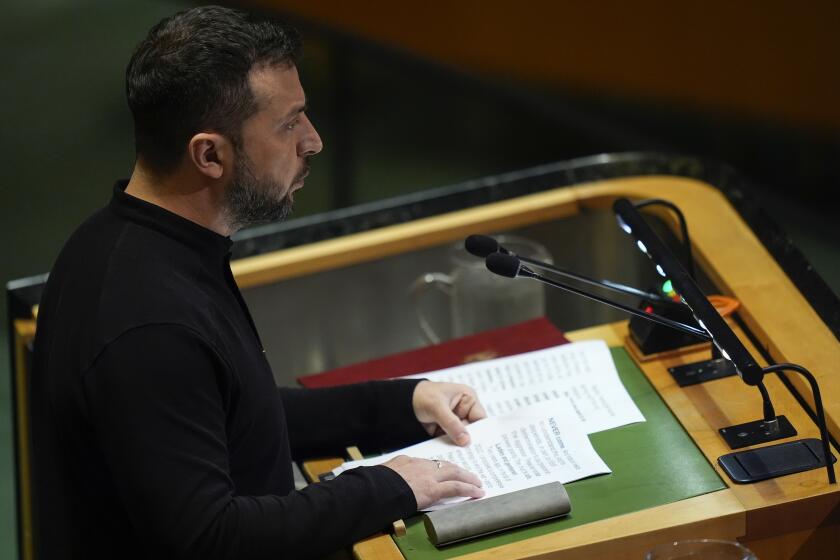U.S. not close to ending missile threat to aircraft
A State Department envoy assigned to reduce the worldwide supply of shoulder-fired missiles said Tuesday that missiles traded on the black market remain a potential threat to civilian aircraft.
In his first public comments since beginning the effort six months ago, Lincoln P. Bloomfield Jr. said that there is a total of about 500,000 missiles of the type that have been used to shoot down 28 civilian planes since the 1970s, killing 600 to 800 people.
Even though the U.S. government is spending millions of dollars to buy up missiles and help other nations secure their stockpiles, Bloomfield acknowledged that the effort is not likely to eliminate the threat anytime soon.
Speaking at the Nixon Center, a think tank in Washington, Bloomfield said he wished he could report that the threat is subsiding.
But “it’s not like that at all. . . . The job is not largely done.”
World leaders have been increasingly concerned about the threat of the weapons since the 1980s, when U.S.-built Stingers fired by Afghan rebels shot down hundreds of Soviet aircraft, turning the course of their war against Moscow’s occupation.
Such missiles also were built in Russia and China.
The weapons have posed a threat to U.S.-led forces in Iraq, where they were stockpiled by Saddam Hussein.
They also have been widely used in Afghanistan and Pakistan, the Horn of Africa and the Balkans, Bloomfield said.
U.S. officials have expressed concern that some may have fallen into the hands of the leftist rebel group the Revolutionary Armed Forces of Colombia.
Israeli officials are concerned that they may be in the possession of Palestinian militants in the Gaza Strip.
The danger was highlighted in December 2002, when two SA-7 missiles were fired at an Israeli charter plane carrying 271 tourists to Tel Aviv from Mombasa, Kenya. The missiles are believed to have been fired by Al Qaeda-linked Somali terrorists.
The missiles missed the plane, but the attack had a devastating economic effect on Kenya. The country’s tourism revenue dropped 25%, and the nation’s gross domestic product decreased 3% to 4%, Bloomfield said.
U.S. authorities say they have seen no evidence of an increased threat to aircraft in the United States, but the Department of Homeland Security has been looking into whether effective and economical protective devices could be added to U.S. civilian aircraft.
Bloomfield said he has been trying to convince governments around the world that many of their old Russian- and Chinese-made shoulder-fired missiles, left over from the Cold War arms race, probably aren’t functional and could pose the risk of explosion. He also has been offering U.S. aid to make their arsenals more secure and airports safer from attack.
About 10% of the world supply, about 50,000 missiles, is in the hands of governments whose stewardship “is wanting,” in some cases simply because they can’t afford to properly protect the weapons, Bloomfield said.
Some governments have been responsive to U.S. entreaties, but others “don’t want to see us,” because of political friction.
Major terrorist groups have not demonstrated a steady determination to attack commercial aircraft with missiles, but Bloomfield said the threat is “a real problem, it’s one we do take seriously.”
Asked whether U.S. efforts have reduced the availability of such weapons, he said that it is now more difficult than it once would have been for militant groups to procure them.
--
More to Read
Sign up for Essential California
The most important California stories and recommendations in your inbox every morning.
You may occasionally receive promotional content from the Los Angeles Times.











